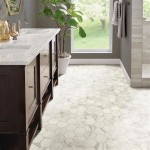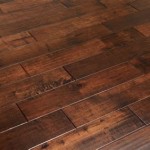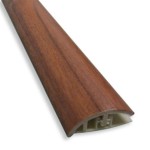Laminate flooring has become increasingly popular in recent years as a stylish and cost-effective alternative to hardwood flooring. However, there are some drawbacks to laminate flooring that must be taken into consideration before making a final decision. This article will outline the potential disadvantages of laminate flooring, as well as provide tips on how to reduce their impact.
Durability
One of the major disadvantages of laminate flooring is its lack of durability compared to hardwood flooring. Laminate flooring is made of several layers of synthetic material that are bonded together and covered with a thin layer of plastic. While this type of flooring is much more durable than carpet, it is still less durable than hardwood. Laminate flooring is prone to scratches and dents, and can be easily damaged by high heels or moving heavy furniture, which is why it is not recommended for high traffic areas. Additionally, laminate flooring cannot be refinished, so once it is damaged, it must be replaced.
Installation
Another disadvantage of laminate flooring is that it is difficult to install. While laminate flooring can be installed as a floating floor, meaning that it is not attached to the subfloor, this type of installation is often more difficult than traditional hardwood flooring. Floating floor installations require careful measuring and cutting to ensure that the boards fit together properly. Additionally, laminate flooring is more susceptible to moisture than hardwood, so extra care must be taken to ensure that it is installed correctly.
Maintenance
Laminate flooring also requires more maintenance than hardwood. Laminate flooring must be swept or vacuumed regularly to remove dirt and debris and must be mopped occasionally with a damp mop. Additionally, laminate flooring should not be exposed to too much water, as this can damage the flooring’s finish. While laminate flooring is relatively low maintenance, it does require more upkeep than hardwood.
Appearance
While laminate flooring is available in a variety of colors and patterns, it is still not as natural looking as hardwood. Laminate flooring is made of a synthetic material and does not have the same variation in grain or color, which can make it appear artificial. Additionally, laminate flooring can be prone to fading over time, and can also be easily scratched or dented. While laminate flooring can be a great choice for a budget-conscious homeowner, its lack of natural beauty may be a deal breaker for some.
Cost
Finally, laminate flooring is typically cheaper than hardwood flooring, but it can still be a significant expense. Depending on the size of the room, the quality of the flooring, and the type of installation, laminate flooring can range from a few hundred dollars to thousands of dollars. While laminate flooring is often a cost-effective choice, it can still be a significant financial investment.
Conclusion
Laminate flooring is a popular and cost-effective alternative to hardwood, but it is not without its drawbacks. While laminate flooring is relatively durable and easy to maintain, it is not as aesthetically pleasing as hardwood and can be expensive to install. Additionally, laminate flooring can be prone to scratches and dents and may require more maintenance than hardwood. Before making a final decision, it is important to weigh the pros and cons of laminate flooring to ensure that it is the right choice for your home.







:max_bytes(150000):strip_icc()/laminate-vs-hardwood-flooring-how-they-compare-1821870_FINAL-5bae84f24cedfd0026f4205d-f0eb410f3d13406cb5890209447251ba.png)
:max_bytes(150000):strip_icc()/SPR_1822800-vinyl-vs-laminate-flooring-5ae8c7b3ba61770036738c2e.png)



![Laminate Flooring Pros and Cons [Updated] FloorTheory](https://i2.wp.com/floortheory.com/wp-content/uploads/2021/06/Laminate-Flooring-Pros-and-Cons.jpg)


Related Posts








